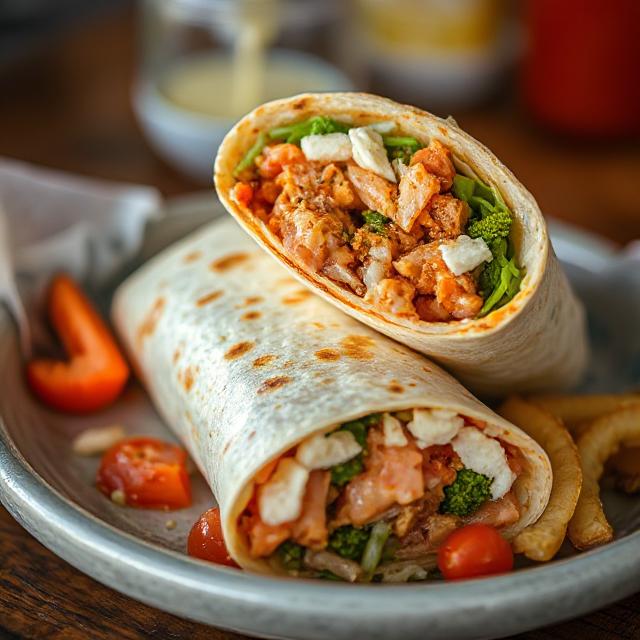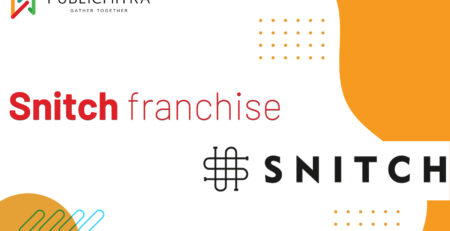California Burrito Franchise in India: Cost, Profitability, Expansion & Founder Story
Introduction
In the dynamic world of Indian quick-service restaurants (QSR), California Burrito has emerged as a standout brand, introducing fresh, Mexican-inspired fast casual dining to a discerning urban Indian audience. With over 100 outlets across major Indian cities and strong financial performance, the brand represents a compelling case for potential franchisees seeking to tap into a high-growth segment. In this article, we explore everything—from franchise costs and profit margins to the founder’s inspiring journey and regional presence in Delhi, Bengaluru, and Chennai, along with comparisons to brands like Mucho Burrito and Taco Bell. Plus, we address some pressing questions and include a questionnaire for potential franchise applicants.
Table of Contents
About California Burrito in India
Founder & Origins
Franchise Cost in India
Profitability & Business Model
Regional Presence: Delhi, Bengaluru, Chennai
Is California Burrito Profitable?
Is It an Indian Company?
Mucho Burrito: Franchise Potential & Comparison
Taco Bell in India: A Quick Contrast
Common Public Perceptions & Customer Feedback
Franchisee Questionnaire
Conclusion
1. About California Burrito in India
California Burrito India is a fast-casual QSR chain that began in 2012 and has rapidly grown to over 103 outlets by 2025, serving cities like Bangalore, Hyderabad, Delhi, Noida, Gurugram, and Chennai. The menu features burritos, tacos, salads, nachos, and rice bowls with a customizable “make-it-yourself” model akin to San Francisco’s Mission District, adapted to Indian tastes—think vegetarian, vegan, and paleo option.
2. Founder & Origins
The brand was founded in 2012 by Americans Bert Mueller, Dharam Khalsa, and Gaelan Connell. The story began in 2010 when Bert Mueller visited Jaipur during a study trip, inspired by Indian flavors and seeing a gap in the market for Mexican cuisine. Their first outlet, in Bengaluru’s Embassy Golf Links Tech Park, took off—doing around 150 bills per hour with zero marketing in the initial months. Funding followed: about $250K in initial capital, plus a $750K angel round in 2013, enabling expansion via a company-owned, company-operated (COCO) model.
3. Franchise Cost in India
California Burrito operates primarily under a COCO model, but they now appear to offer limited franchising opportunities.
According to a franchise information platform:
- Franchise Fee: ₹5–15 lakh + 18% GST
- Store Setup Requirements:
- Kiosk: 400–500 sq ft (office cafeterias, airports, high-traffic)
- Full Restaurant: 500–1000 sq ft (urban centers)
- Store Fit-out: ₹5–10 lakh
- Machinery/Equipment: ₹6–10 lakh
- IT Support: ~₹1 lakh
- Total Investment Estimate: ₹50–80 lakh (approx.)
- Royalty Fees: 5–8%
- Anticipated Net Profit Margin: 12–20% annually
4. Profitability & Business Model
While franchises offer defined cost and margin estimates, California Burrito’s own financial trajectory is equally compelling:
- By FY2021, the brand achieved ₹110 crore in revenue.
- In 2024, external reports valued it around $23 million (~₹190–200 crore).
- Standard outlet benchmark revenue reached ₹30 lakh/store per month (up from ₹12 lakh).
- During the COVID-19 downturn, revenue plunged from ₹4 crore/month to ₹25 lakh, but recovery ensued by late 2021 with fewer stores and strengthened delivery — which now accounts for 60% of business (up from 30%).
5. Regional Presence: Delhi, Bengaluru, Chennai
Bengaluru was the launchpad (2012) and remains HQ.
Other cities served include:
- Delhi / NCR (Delhi, Noida, Gurugram)
- Hyderabad
- Chennai, with the 50th store launching there in 2023.
By 2025, 103 stores are spread across these six urban markets.
6. Is California Burrito Profitable?
Yes, the chain is profitable—and has demonstrated resilience.
- It hit ₹110 crore in revenue, and post-pandemic, returned to pre-COVID performance by October 2021.
- It continues to scale outlet revenue per store and deliver more via pickups and delivery models.
- Investors and media have acknowledged its profitability and market strength.
7. Is California Burrito an Indian Company?
Yes. California Burrito India is an Indian company, founded and operated in India, headquartered in Bengaluru—with Indian operations, staffing (~1,405 employees in 2024), and supply chains adapted to local tastes and sourcing Wikipedia. While its founders are American, the brand is firmly rooted in Indian entrepreneurship and QSR infrastructure.
8. Mucho Burrito: Franchise Potential & Comparison
Mucho Burrito is a North American (Canada origin) brand offering Mexican-style fast casual cuisine via franchise. As of now, its footprint is primarily in Canada with limited U.S. expansion.
- Franchise Costs (India)
- Support includes training, marketing, operations, and corporate systems from MTY Group
Comparison with California Burrito (India):
| Feature | California Burrito (India) | Mucho Burrito (North America) |
|---|---|---|
| Origin | Indian QSR (American founders) | Canadian chain |
| Franchise Cost | ₹50–80 lakh (~$60K–100K) + royalty | ~$282K–815K, with fees |
| Model | Primarily COCO, limited franchising | Fully franchise model |
| Local Adaptation | Menu & sourcing tailored to Indian market | Western menu, broad franchise support |
| Profitability | >₹100 cr revenues, strong recovery | Not specified |
9. Taco Bell in India: A Quick Contrast
Taco Bell entered India in 2010, and as of 2019, had around 35 outlets via a national master franchise (Burman Hospitality), with ambitions to expand to 600 by 2029 Wikipedia. Unlike California Burrito, its menu is more Western‐centric and less tailored to Indian tastes.
Customer sentiment often favors California Burrito over Taco Bell, citing fresher ingredients and better flavors:
“The food from Cali Burrito feels less processed … California Burrito feels closer to the real thing.” “California Burrito is far better than Taco Bell.”
10. Public Perceptions & Customer Feedback
Customer feedback is mixed but insightful:
- A user in Delhi raved about ingredient freshness and ease of ordering.
- Another noted portion sizes were smaller than expected—“all rice and barely any chicken”.
- In Hyderabad, someone remarked negatively on inauthentic ingredients like basmati rice.
- Food safety concerns arose from a Bengaluru user who reported food poisoning from reheated rice.
These highlight quality and consistency as key challenges in QSR operations, especially across multiple locations.
11. Franchisee Questionnaire
If you’re considering owning a California Burrito franchise, here’s a structured questionnaire to assess readiness:
- Location & Format
- Are you targeting a kiosk (400–500 sq ft) or full-scale restaurant (500–1000 sq ft)?
- What city—Delhi/NCR, Bengaluru, Chennai, Hyderabad? Study density and consumer behavior.
- Investment & Finances
- Do you have ₹50–80 lakh plus GST for setup?
- Have you evaluated royalty (5–8%) and predicted ROI (12–20%)?
- Operational Capability
- Can you manage supply chain, staff training, operations per COCO model?
- Will you rely on franchisor for operational marketing support?
- Brand Fit & Market Adaptation
- Is there demand for Mexican/mex-fusion QSR in your target area?
- Is vegetarian/vegan customization important locally?
- Risk Management & Quality Control
- How will you ensure freshness and food safety across outlets?
- What’s your plan for delivery integration, and maintaining operational standards?
- Growth Vision
- Are you investing long-term (e.g., aiming to scale)?
- Would you explore company-owned stores or eventually multi-unit franchising?
12. Conclusion
California Burrito franchise in India offers a promising proposition: a well-established QSR brand with strong financial performance, Indian market adaptation, and a relatively moderate franchise investment. Unlike Taco Bell’s Western chain model, California Burrito has earned credibility among Indian consumers for freshness, customization, and innovation—despite some quality control challenges. For entrepreneurs seeking an operational yet scalable opportunity in fast casual dining, it’s certainly worthy of consideration.
If you’re ready to explore further—such as official franchising terms, training support, city-specific strategies—feel free to check their official website!












